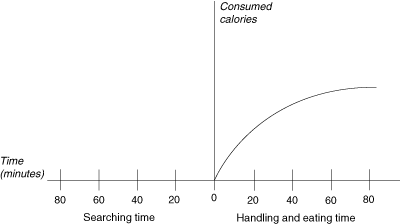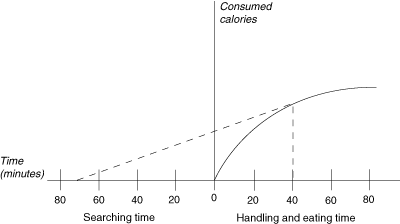Suggestions
Use up and down arrows to review and enter to select.Please wait while we process your payment
If you don't see it, please check your spam folder. Sometimes it can end up there.
If you don't see it, please check your spam folder. Sometimes it can end up there.
Please wait while we process your payment

By signing up you agree to our terms and privacy policy.
Don’t have an account? Subscribe now
Create Your Account
Sign up for your FREE 7-day trial
Already have an account? Log in
Your Email
Choose Your Plan
Individual
Group Discount
Save over 50% with a SparkNotes PLUS Annual Plan!
 payment page
payment page
Purchasing SparkNotes PLUS for a group?
Get Annual Plans at a discount when you buy 2 or more!
Price
$24.99 $18.74 /subscription + tax
Subtotal $37.48 + tax
Save 25% on 2-49 accounts
Save 30% on 50-99 accounts
Want 100 or more? Contact us for a customized plan.
 payment page
payment page
Your Plan
Payment Details
Payment Summary
SparkNotes Plus
You'll be billed after your free trial ends.
7-Day Free Trial
Not Applicable
Renews April 25, 2024 April 18, 2024
Discounts (applied to next billing)
DUE NOW
US $0.00
SNPLUSROCKS20 | 20% Discount
This is not a valid promo code.
Discount Code (one code per order)
SparkNotes PLUS Annual Plan - Group Discount
Qty: 00
SparkNotes Plus subscription is $4.99/month or $24.99/year as selected above. The free trial period is the first 7 days of your subscription. TO CANCEL YOUR SUBSCRIPTION AND AVOID BEING CHARGED, YOU MUST CANCEL BEFORE THE END OF THE FREE TRIAL PERIOD. You may cancel your subscription on your Subscription and Billing page or contact Customer Support at custserv@bn.com. Your subscription will continue automatically once the free trial period is over. Free trial is available to new customers only.
Choose Your Plan
For the next 7 days, you'll have access to awesome PLUS stuff like AP English test prep, No Fear Shakespeare translations and audio, a note-taking tool, personalized dashboard, & much more!
You’ve successfully purchased a group discount. Your group members can use the joining link below to redeem their group membership. You'll also receive an email with the link.
Members will be prompted to log in or create an account to redeem their group membership.
Thanks for creating a SparkNotes account! Continue to start your free trial.
We're sorry, we could not create your account. SparkNotes PLUS is not available in your country. See what countries we’re in.
There was an error creating your account. Please check your payment details and try again.
Please wait while we process your payment

Your PLUS subscription has expired
Please wait while we process your payment
Please wait while we process your payment

Problem :
What is profitability? Describe it in your own words. How is it calculated?
Profitability is the measure of the net energy gain from eating a food source. Energy is expended in handling the foot item, and energy is gained by eating the food item. Handling time may waste valuable time searching for and consuming other items. Profitability is calculated as E/h, the energy gained by eating the item divided by the time handling the item.
Problem :
You are standing in front of a McDenny's and it is dinner time. You consider ordering chicken nuggets, but you are very hungry and not quite sure they will satisfy you. There is a supermarket not too far away, it would probably take you 30 minutes to go to the supermarket and buy a steak. And while the steak has 500 calories, it also takes 20 minutes to cook. The line at McDenny's is not too long, and it will only take you about 7 minutes to get your food, but chicken nuggets only contain 220 calories. Should you stay and order the nuggets or go to the supermarket and get a steak?
The profitability, E/h of chicken nuggets is 220/7= 31.4. E/T for the steak is 500/(20+30)= 10. You should eat the nuggets; you know you want to.
Problem :
You are walking in the woods, and are very hungry. Berries are very plentiful where you are, but the do not contain as many calories as apples, which are not quite as easy to find. As you are walking along, you come across an apple tree. Should you spend your time eating the apple, or spend your time eating berries, which you would be able to eat continuously?
You should eat the apple. You should always eat the more profitable food source if you find it. The contingency theory assumes you have the less profitable food item in front of you and are deciding whether to eat it or search for better food items. If you have found the more profitable food item, it always pays to eat it.
Problem :
Describe in your own words why an animal should leave a food patch when the rate of consumption lowers beyond a certain point.
As an animal consumes the food in a given patch, the food in that patch becomes scarcer, and so the rate of consumption decreases, even though the total consumption is still increasing. After the optimal time to stay at any one patch, it would be more profitable to search for a fresh patch where the rate of consumption would be much higher.
Problem :

The above graph shows you the rate of calorie consumption as a function of time spent at one food source. Food is running out, and you know there is another, completely fresh source about 70 minutes away. What is the total time you should spend at the source you are currently at before leaving for a new source?

We know the search time until we find the next source is 70 minutes. We draw a line from 70 minutes that is tangent to the curve, and we find that it touches the curve at a handling time of 40 minutes. This means that after we have been at our current food source for 40 minutes, we should leave for the new source.
Please wait while we process your payment

